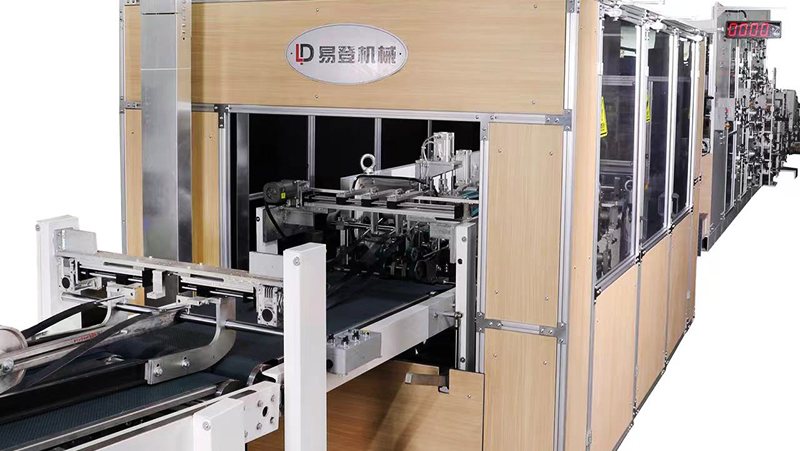Optimizing Energy Efficiency in Modern Paper Bag Manufacturing Machinery
Release time:2025-05-28 Classification:Knowledge
The paper packaging industry faces constant pressure to enhance sustainability and reduce operational costs. A significant area of potential improvement lies in energy saving for paper bag machine operations. These machines, crucial for converting paper rolls into versatile bags, are traditionally energy-intensive, particularly in stages involving drying, sealing, and forming. Implementing effective energy saving strategies is no longer optional; it's a critical operational and environmental imperative. This article explores key approaches to achieving substantial energy saving in paper bag machine production lines.

Understanding the Energy Demands:
A typical paper bag machine consumes energy across several core functions:
- Drive Systems: Motors powering rollers, conveyors, cutters, and forming mechanisms.
- Heating Elements: Essential for activating adhesives (hot melt glue), drying printed inks, and sometimes forming seals. This is often the largest energy consumer.
- Control Systems & Ancillaries: Electronics, compressed air systems, lighting, and ventilation.
- Auxiliary Equipment: Stand-alone pre-feeders, printers, or bottom pasting units feeding the main machine.
Strategies for Significant Paper Bag Machine Energy Saving:
- High-Efficiency Drive Systems:
- Premium Efficiency Motors (IE3/IE4): Replacing older motors with modern, high-efficiency models (meeting IE3 or IE4 standards) significantly reduces electrical consumption for constant-speed applications.
- Variable Speed Drives (VSDs/Inverters): Implementing VSDs on motors driving components like conveyors, fans, or pumps allows the motor speed to precisely match the actual load demand. Instead of running constantly at full speed, motors slow down when less power is needed, achieving energy saving of 20-40% or more on these applications. This is especially effective for infeed sections or handling variable line speeds.
- Optimizing Heating and Drying Processes:
- Precision Temperature Control: Utilizing advanced PID controllers with fine-tuning capabilities ensures heating zones (glue pots, drying tunnels, sealers) maintain the exact required temperature, eliminating wasteful overheating. Regular calibration of sensors is vital.
- Targeted Heating: Employing localized heating (e.g., focused IR heaters or precise nozzle systems for glue application) minimizes the heated volume compared to large oven chambers, drastically reducing energy input. Efficient nozzle design reduces glue consumption and subsequently the energy needed to heat it.
- Insulation: High-quality insulation on glue tanks, hoses, and drying chambers minimizes radiant heat loss, requiring less energy input to maintain temperatures.
- Heat Recovery Systems: Capturing waste heat from exhaust air in drying sections using heat exchangers can pre-heat incoming fresh air or water used elsewhere in the process or facility, representing a major energy saving opportunity.
- Advanced Control Systems and Automation:
- Smart Power Management: Modern PLCs can manage machine states efficiently. Implementing automatic shutdown or significant power reduction modes for motors, heaters, and peripherals during scheduled breaks, lunchtimes, or unexpected short stops prevents idle energy drain.
- Energy Monitoring Systems: Installing sub-meters to track energy consumption of individual machine sections (drives, heaters, ancillaries) provides granular data. This visibility is essential for identifying high-consumption areas, quantifying the impact of energy saving measures, and enabling targeted improvements.
- Optimized Operational Parameters: Fine-tuning machine settings like line speed, glue application temperature and volume, and drying air flow based on the specific paper grade and bag design avoids unnecessary energy expenditure. Running heaters slightly hotter "just to be safe" is a common source of waste.
- Preventative Maintenance: A Foundation for Efficiency:
- Bearing Lubrication & Alignment: Properly lubricated and aligned bearings reduce friction in drive trains, lowering the load on motors.
- Transmission Belt Tension: Correctly tensioned belts ensure efficient power transfer without slippage.
- Clean Heat Exchangers & Air Filters: Dirty heat exchangers in dryers or compressed air coolers, and clogged air filters in ventilation systems, force equipment to work harder, consuming more energy. Regular cleaning is crucial.
- Seal Integrity: Checking for and repairing air leaks in compressed air lines and steam traps prevents energy loss.
- Compressed Air Optimization:
- Leak Detection and Repair: Compressed air leaks are incredibly wasteful. Regular leak detection programs and prompt repairs are essential.
- Right-Sized Compressors: Ensuring compressed air supply matches demand without excessive overcapacity.
- Efficient Nozzles: Using engineered air nozzles for tasks like web guiding or cleaning minimizes compressed air consumption.
The Tangible Benefits of Paper Bag Machine Energy Saving:
Implementing these strategies delivers compelling advantages:
- Reduced Operating Costs: Lower electricity and fuel bills directly improve the bottom line.
- Lower Carbon Footprint: Decreased energy consumption translates directly into reduced greenhouse gas emissions, supporting corporate sustainability goals and regulatory compliance.
- Enhanced Competitiveness: Energy-efficient operations lower production costs, providing a competitive edge.
- Improved Process Stability: Precise temperature and speed control often lead to higher product quality and reduced waste.
- Extended Equipment Lifespan: Running motors and heaters under optimized conditions reduces thermal and mechanical stress, prolonging component life.
Achieving significant energy saving in paper bag machine operations requires a holistic approach. It combines investing in modern, efficient hardware (motors, drives, heaters), implementing intelligent control strategies, adhering to rigorous preventative maintenance, and fostering an operational culture focused on efficiency. The potential for reduction is substantial, impacting both the environmental footprint and the economic viability of paper bag manufacturing. As technology continues to advance, with developments in ultra-efficient heating, AI-driven optimization, and improved heat recovery, the pursuit of even greater paper bag machine energy saving remains a dynamic and essential focus for the industry. Continuous monitoring, analysis, and improvement are key to unlocking ongoing efficiency gains.






